 Which are the top 7 blockchains in the world right now? Discover our toplist of blockchain reviews in order to discover cheap ways to transfer, buy and sell cryptocurrencies – while learning about consensus methods.
Which are the top 7 blockchains in the world right now? Discover our toplist of blockchain reviews in order to discover cheap ways to transfer, buy and sell cryptocurrencies – while learning about consensus methods.
Most people interested in crypto know that the first major blockchain created was Bitcoin. But which is the newest blockchain? Nowadays, 15 years after Bitcoin was created there are an ever growing number of fast blockchains released with different features and utilities.
See our reviews about the quick and scalable ecosystems with low transfer fees in our blockchain comparison below. Learn which Crypto Lists consider the most successful to date and see which coins and tokens are connected.
Toplist – 71 Best Blockchains in the World
This is the toplist with the most successful and best blockchains in the world, especially relevant in United States. There may still be restrictions on what people in the your country are allowed to do when it comes to blockchains and cryptocurrencies. So make sure that you read up on the regulatory restrictions before investing. Crypto is extremely volatile and not suitable for everyone to invest in. Never speculate with money that you cannot afford to lose.
Go directly to
- 1 Toplist – 71 Best Blockchains in the World
- 2 FAQ About Blockchains
- 2.1 How can blockchains be compared?
- 2.2 Blockchains — then and now
- 2.3 How did blockchain develop?
- 2.4 What is a block in a blockchain?
- 2.5 How can a blockchain protocol be described?
- 2.6 What is a Distributed Ledger?
- 2.7 Transactions – How is Information Stored in the Blockchain?
- 2.8 Anonymity and Transparency
- 2.9 Security of the Blockchain Protocol
- 2.10 Difference between Proof of Work (PoW) & Proof of Stake (PoS)
- 2.11 Why Care About Proof Of Stake (PoS)?
- 2.12 Will Proof of Work be number one forever?
- 2.13 Elaborating on Proof of Stake
- 2.14 Comparison between PoS and PoW
- 3 10 Blockchains Worth Considering in 2023-24
- 3.1 Ethereum
- 3.2 BNB Chain
- 3.3 Solana blockchain
- 3.4 Fantom Opera blockchain
- 3.5 Polygon blockchain
- 3.6 Terra blockchain
- 3.7 ATOM blockchain
- 3.8 Cronos blockchain
- 3.9 Cardano blockchain
- 3.10 Ripple blockchain
- 3.11 Private blockchains
- 3.12 What is a private blockchain?
- 3.13 Private blockchain vs public blockchain
- 3.14 What is Google blockchain?
- 3.15 Is Samsung blockchain a real network or just a hot name?
- 3.16 YouTube blockchain videos
- 3.17 New blockchain projects in 2024
- 3.18 Blockchain explorers
- 3.19 What is a blockchain explorer?
- 3.20 Why care about blockchain explorers?
- 3.21 Which data can you usually get from blockchain explorers?
FAQ About Blockchains
Here we list and answer the most frequently asked questions related to blockchain technology, how it works, their main properties and usage. There is a large variety of utilities for different blockchains and a huge number of different tokens and coins related to them. We have blockchain toplists covering everything from Layer 0 to Layer 2, with ZK Rollups and Anonymous networks also.
Have you got any questions about blockchains? Feel free to contact us and ask your questions. We are always open for suggestions on new exciting blockchains that we should have a closer look at and review.
How can blockchains be compared?
Our blockchain comparisons start with measuring and comparing the developers behind a project. It’s one of the first things that Crypto Lists look into. If the developers have created or been co-founders of other blockchains before, it can increase the possibillity of success for a new project. The general reputation is also crucial for blockchains. Over time, the popularity and turnover of a particular network are some of the critical points when comparing the best blockchains. Each of our blockchain reviews look into the following: blockchain technology, developers, popularity, costs, reputation, buzz on social media, turnover and transaction speed of the blockchain.
Blockchains — then and now
A blockchain is a method of storing data that makes system modifications, hacking, and fraud difficult or impossible. It is a network of computer systems that duplicates and distributes a digital ledger of transactions across the entire network. Each participant’s ledger receives a copy of every new transaction on the blockchain, and each block in the chain consists of several transactions. The term distributed ledger technology (DLT) describes a decentralized database governed by many users.
How did blockchain develop?
The initial purpose of creating blockchain was for the technology powering Bitcoin. Since then, it has swiftly gained fame for its capacity to produce a sizable, globally distributed ledger that runs on millions of devices and can record anything of value. The creation of a blockchain application takes considerable time and careful planning.
Bitcoin, an experiment with a digital currency, was the first significant blockchain development, but it is not the longest running blockchain. Bitcoin’s market capitalization currently ranges between $300-400 billion, though briefly surpassed $1 trillion in the two bull runs of 2021. And, millions of individuals use it to make payments.
However, the oldest blockchain is not Bitcoin. Surety is the world’s longest running blockchain that has been operating covertly, predating Bitcoin by 13 years. The cryptographers Stuart Haber and Scott Stornetta developed blockchain technology in 1991. The purpose of the worlds first blockchain was to date digital records and prove their validity rather than to move wealth. Therefore, it is a time-stamping service. Since 1995, it has converted each hash value into a hexadecimal, base-16 number once weekly. Then, the resulting sequence was made available in the Sunday New York Times’ national classified section.
What is a block in a blockchain?
A block is a data structure in a blockchain database, whereby transaction information in a crypto blockchain is recorded permanently and encrypted. Blocks record part of or every recent transaction that haven’t been validated by the network yet. After the data has been validated, it is closed. Consequently, a new one is made for new transactions to be recorded into and then validated. Then another block comes and finally another validated transaction.
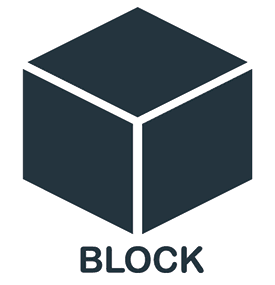
Therefore, blocks are a permanent store of data records that cannot be removed or altered once written.
How can a blockchain protocol be described?
A blockchain is a decentralized database that’s shared between the nodes of a network. Blockchains electronically store data in digital format. Their main role is to maintain a decentralized and secure transaction records. The best part is it ensures the security and fidelity of data records and generates trust without involving a third party.
Typically, normal databases structure information into tables whereas blockchains structures it into chunks that are strung together.  The resulting data structure creates an irreversible data timeline inherently when implemented in a distributed manner. When one unit is complete, it’s set in stone and forms part of this timeline. Every unit in that chain is assigned a precise timestamp and immediately it’s added to the chain.
The resulting data structure creates an irreversible data timeline inherently when implemented in a distributed manner. When one unit is complete, it’s set in stone and forms part of this timeline. Every unit in that chain is assigned a precise timestamp and immediately it’s added to the chain.
What is a Distributed Ledger?
A decentralized ledger, also known as a distributed ledger, is a special type of database that is shared that is shared consensually and synchronized across a plethora of sites, geographic locations, and institutions, accessible by many people. It enables financial transactions to have public witnesses.
The participants at every network’s node can access all the recordings that are shared across the network and have the ability to create identical copies of them. All the additions and changes that are made to that ledger are copied and reflected to every participant in a few seconds or minutes.
A decentralized ledger differs from a central ledger, which is used by the majority of companies. A central ledger usually requires a central authority (a trusted third party) to monitor and prevent manipulation. Central ledgers are more susceptible to cyber fraud and attacks, and have a single point of failure.
Transactions – How is Information Stored in the Blockchain?
Blockchains collect information and puts them together in groups that are referred to as blocks. 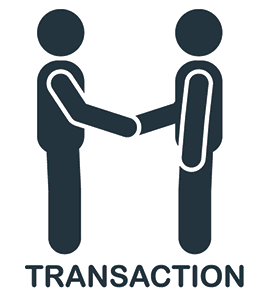 The role of these blocks is to hold various sets of information such as the magic number, block size, block header, transactions and transaction counter.
The role of these blocks is to hold various sets of information such as the magic number, block size, block header, transactions and transaction counter.
Blocks have limited storage capacities and when they are filed, they are closed and connected to the block that was filled previously. This creates a blockchain. All new information that follows the freshly-added block will be compiled into a new block and then added to that chain once it is filled.
Anonymity and Transparency
As mentioned above, a blockchain is completely decentralized. Since it’s decentralized, every transaction can be viewed transparently by using chain explorers or a personal node that enable all participants to view transactions happening in real time.  Every node possesses its copy of the network which is consistently updated as new units are added and validated. This means that you can track a token from the moment it was first traded to its present owner.
Every node possesses its copy of the network which is consistently updated as new units are added and validated. This means that you can track a token from the moment it was first traded to its present owner.
For instance, if a particular crypto token was hacked by a totally anonymous hacker, the tokens that were extracted can still be traced easily. If the tokens that were stolen were to be spent somewhere or moved, it would immediately be known.
More so, all the records kept in a chain are encrypted. Only the owners of the network can decrypt the network to reveal the hackers’ identity (by using a public-private key pair). With an anonymous blockchain, chain users can remain private in their dealings while preserving transparency.
Security of the Blockchain Protocol
The blockchain protocol achieves trust and decentralized security in many ways. First, new blocks are chronologically and linearly stored. In simpler terms, it means that they are added to the end of a particular blockchain. Once it is added to the end of that blockchain, it is impossible to go back and change its contents unless the majority of the network’s participants have reached a consensus to do it.
The reason for this is that all blocks have time stamps and a “hash” as well as the “hash” of the unit before it. Hash codes are designed by using a special mathematical function that converts digital data into a strong of letters and numbers. If any of this information is altered or edited in any manner, then that hash code changes as well.
For example, let’s say that hacker X, who also runs a node on the blockchain protocol, intends to change the blockchain protocol and steal crypto from everyone. If hacker X alters his single copy, it will not align with the copies of the other participants on the chain. When all the other participants cross-reference their copies against the others, they will notice one copy standing out, and hacker X’s copy will be rendered illegitimate.
To hack it successfully, it would require hacker X to control and change 51% or more copies of that chain simultaneously so that the new copy is converted to the majority copy; and therefore, the agreed-upon chain. Carrying out such an attack would need so much resources and money because the hacker would have to rebuild all the blocks because they would be bearing different hash codes and timestamps.
Besides, the chances of the hack being fruitless are higher than becoming successful. In addition, doing so cannot go unnoticed because members will realize that there are drastic changes to the chain. This will result in the participants of that network to hard fork to a novel version that is unaffected. As a result, the value of the attacked version will plummet; thus, making the entire attack worthless.
That said, blockchains are designed in this manner to make participating in the chain more economically incentivized as compared to attacking it.
Difference between Proof of Work (PoW) & Proof of Stake (PoS)
These are the primary consensus methods to validate new transactions, add them to the blockchain, and produce fresh tokens. The more established of the two is Proof of Work. Major projects like Ethereum 1.0 and Bitcoin employ it. On the other hand, Proof of Stake, a more recent consensus technique, drives Solana, Cardano, and other (usually newer) cryptocurrencies. Let’s discuss them one by one to get a better understanding of each one.
Why Care About Proof Of Stake (PoS)?
Blockchains with proof of stake are the most popular ones, since they speed up block verification and give rewards to all crypto owners that stake their assets. 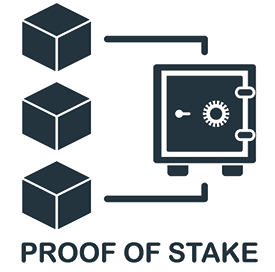 It’s a way of rewarding the owners, that didn’t exist in Proof of Work (PoW), which Bitcoin based upon. Ethereum switched from PoW to PoS in fall 2022, in an event known as ‘the merge’. See a toplist of the best crypto coins with proof of stake here.
It’s a way of rewarding the owners, that didn’t exist in Proof of Work (PoW), which Bitcoin based upon. Ethereum switched from PoW to PoS in fall 2022, in an event known as ‘the merge’. See a toplist of the best crypto coins with proof of stake here.
Will Proof of Work be number one forever?
Mining and proof of work are concepts that are closely related. The network needs a lot of computing power, which is why it’s dubbed “proof of work.” Virtual miners from all over the world secure and verify these blockchains by competing to be the first to solve a mathematical puzzle. This was the first cryptocurrency consensus algorithm for Bitcoin. It rewards the winner with a set number of cryptocurrencies and allows them to update the blockchain with the most recent verified transactions.
Elaborating on Proof of Stake
Many developers knew from the beginning that scaling problems with proof of work would eventually arise and need fixing. A whole new ETH2 blockchain was created as their solution. The proof of stake consensus mechanism uses fewer resources and is relatively faster. Newer cryptocurrencies use proof-of-stake consensus processes, including Cardano and Solana. There main is to optimize speed and efficiency while minimizing costs.
Generally, proof of stake blockchains uses a network of validators who donate, or “stake”, their cryptocurrency in exchange for the opportunity to validate new transactions and update the blockchain potentially. Staking performs a similar role to mining in a proof of stake system. It selects a network participant to add the most recent batch of transactions to the blockchain in exchange for some cryptocurrency.
Comparison between PoS and PoW
To validate new records or entries to a particular block, most of the computing power of the decentralized network would have to agree to it. To deter bad actors from validating double spends or wrong transactions, blockchains are kept secure by a consensus mechanism like Proof of Stake or Proof of Work.
A consensus mechanism is a technique of verifying entries into a decentralized database and keeping them secure. In the case of cryptos, that database is the blockchain. The consensus mechanism upholds the blockchain’s security. It also facilitates agreement even when no node is in charge. Let’s discuss these consensus mechanisms in much detail.
Proof of Work is a consensus mechanism that needs a feasible amount of effort to prevent malicious or frivolous applications of computing power, like carrying out denial of service attacks or sending spam mails. This concept was first used in 2004 by Hal Finney to secure digital money by employing the idea of “reusable proof of work” with the SHA-256 hashing algorithm. Bitcoin followed the same path and became the first widely adopted use case of Finney’s idea of PoW.
On the other hand, Proof of Stake (PoS) is a crypto consensus mechanism that is used to process transactions and create new units in a chain. PoS was designed as an alternative to PoW to solve the problems that the latter was facing. Proof of Stake is considered by some to be less risky based on the susceptibility for attacks on the chain. The reason for this is that PoS structures compensation in such a manner that if an attack was to be carried out on the network, it would be less advantageous.
You can read an in-depth analysis of the differences between the two here.
10 Blockchains Worth Considering in 2023-24
Take a look at the best blockchains to look at for the remainder of 2024.
Avalanche blockchain
The Avalanche chain is identical to Ethereum and known for the fast transaction speed and low transfer costs. Avalanche is frequently used in dApps. Learn more about Avalanche blockchain here or read more about the native coin AVAX.
Ethereum
Ethereum is widely regarded as the most secure cryptocurrency platform. They still employ the Proof of Work (PoW) consensus mechanism, similar to Bitcoin. However, the Ethereum blockchain is planning an upgrade to Proof of Stake (PoS) in the coming upgrades. When Crypto Lists measured new cryptocurrencies from ERC-20, in average 73 tokens was released every single day. The comparison was made between Dec 2021 and Feb, 2022. Discover more about the Ethereum blockchain here.
BNB Chain
The BNB Chain (formerly Binance Smart Chain). Having been established in August 2020, the BNB is a relatively new player in the crypto space. It was developed as a parallel chain to the Binance Chain which was introduced in April 2020 to promote decentralized trading. It boasts high throughputs, smart contract capabilities and it’s compatible with the Ethereum Virtual Machine (EVM). Lots of functions are available for developers with BNB and it has become one of two major blockchains in 2022. In average, 70 new BSC tokens are released every day, when measuring between December 2021 and February 2022. Binance Coin (BNB) is the native cryptocurrency for BNB. Learn more now.
Solana blockchain
Solana’s network prioritizes extremely fast transactions, partly thanks to having two different consensus mechanism – Proof of History (PoH) and Proof of Stake (PoS). Solana is able to process among the fastest blockchain transactions, at about 50,000 transactions per second. In average, 1.5 new Solana tokens were released between December last year and February 2022. Read more about the Solana blockchain here.
Fantom Opera blockchain
It can handle myriads of transactions per second and its transactions are usually settled in a second or three. This South Korean blockchain has been growing rather fast and solve three issues. Learn more about Fantom Opera here.
Polygon blockchain
Initially known as MATIC, Polygon is a crypto platform that was developed to provide a blockchain protocol for developing Ethereum-compatible networks. It serves as the sidechain to Ethereum or a parallel chain that’s linked to Ethereum. It has gained immense popularity because it offers extremely low gas fees and faster speeds. It also enables crypto developers to conveniently launch scaling solutions that are compatible with Ethereum as well as standalone chains that form a network of interconnecting chains.
Terra blockchain
Terra is a decentralized finance ecosystem that forms an algorithmic stablecoin called UST. The Terra blockchain is fairly new and positioned to offer high rewards for stablecoin staking, quick transfers and low transfer fees. Learn more about Terra blockchain here.
ATOM blockchain
Cosmos is one of the major chains that have prioritized interoperability. It is preferred by many crypto traders and investors because they can communicate with each other on the network. That is why it has been dubbed as the internet of blockchains. It is also designed to be highly scalable and provide faster processing times.
Cronos blockchain
Cronos is an Ethereum Virtual Machine chain and it runs parallel to Crypto.org chain. Learn more about Cronos blockchain here.
Cardano blockchain
Considered as the main rival to Ethereum, this platform was established in 2015 as a third-generation chain that prioritizes scalability and an environmental-friendly PoS system. It was created from peer-reviewed academic research and is developed by a tech company known as Input Output Hong Kong (IOHK). Cardano recently finished a hard fork upgrade that will help to facilitate smart contract integrations on the chain.
Ripple blockchain
XRP is used in payments, change and settlements. Its main objective is to fix the problems with traditional banks such as slow transactions and expensive charges. If you’re keen to know more, check out our Ripple review here.
Private blockchains
Even though the original Bitcoin blockchain was intended to function democratically, free from the influence or interference of banks or central regulators, blockchain technology can function under constrained parameters. These are famous as Private blockchains. Before getting into further details, let’s first know what it exactly is.
What is a private blockchain?
A private or anonymous blockchain is a specific kind of blockchain technology where just one company controls the network. Consequently, there isn’t any public participation.
All private blockchain solutions will have some authorization system to identify who is accessing the platform. Private blockchain solutions create these platforms for a company’s internal networking infrastructure. So, to use this platform, trusting the platform is an essential factor. This network model won’t function if the nodes lack trust in one another. A node is one of the machines running the blockchain’s software, which verifies and stores the whole history of all transactions on the network. Therefore, it is exclusively accessible to company employees.
Furthermore, the trusted intermediary oversees the blockchain’s operation and will decide who has access to the private blockchain and may also determine what kinds of access rights each participant has.
Private blockchain vs public blockchain
A public blockchain is an automated, h4 network that anybody may access anonymously and used to view transactions. Public blockchains include those used by Bitcoin and Ethereum, for instance. Anyone with network access can view and add blocks to the chain. Public blockchains also tend to be more anonymous than private blockchains, which do not conceal the identities of anyone taking part in transactions.
Furthermore, they are permissionless because users don’t need to trust each other to interact safely with the blockchain. This means there is no intermediary or gatekeeper. They need to rely on the blockchain’s protocol. You may always view the ledger using a public blockchain. There is no room for fraud or inconsistencies, and it requires everyone to keep the ledger and take part in consensus.
A network administrator runs a private blockchain, and users must give their permission to join the network. One or more entities control the network, which makes using third parties for transactions necessary. In this type of blockchain, only those involved in the transaction have access to the information about the executed transaction.
One of the famous private blockchains is Hyperledger. The Linux Foundation created the Hyperledger project, which uses private blockchains to develop distributed ledger technology for handling confidential business transactions. There is no obligation or mandate for cryptocurrencies to power and incentivize membership on the network because centralized companies manage these private blockchains.
What is Google blockchain?
Google is creating a team to focus on blockchain and similar technologies. This endeavour is under the leadership of an executive with more than ten years of experience in the company’s primary business, search advertising. According to rumours, Google’s engineering vice president Shivakumar Venkataraman is now in charge of the team.
The Google Blockchain Certificate is a topic that many blockchain enthusiasts frequently discuss. They assume that before moving on to the next stage and obtaining blockchain certified by Google, you must pass the test to get a tensor flow certificate. However, it should be emphasized that it is not a comprehensive certification that covers all sorts of blockchains; instead, it is only for their preferred network and procedures.
Is Samsung blockchain a real network or just a hot name?
Samsung Blockchain is not really a network. Crypto Lists would rather call it a type of crypto wallet, similar to Trezor or Ledger. Blockchain users can now manage and exchange virtual assets using third-party wallets on Samsung Galaxy devices, according to a statement from Samsung Electronics. Furthermore, by migrating virtual assets held on a few cold hardware wallets to the Samsung Blockchain Wallet, which is available on most Galaxy devices, the upgrade makes it simpler for blockchain users to access and complete transactions.
There is an additional layer of security here. However, theoretically, there isn’t much that can be done to prevent a potential attacker from trying to use your phone to get your private keys. Of course, they could attempt this with any wallet, but unlike a hardware wallet, most people always carry their phones, which will increase the risk of his happening.
YouTube blockchain videos
It is a valuable resource for learning about blockchain technology. Right now, YouTube is learning hub of choice for novices regarding blockchain technology. There are many videos available on the topic with entertaining graphics and displays. However, finding the right one is important. The video should be easy and up to date with the market. Here we have listed two of the best Blockchain YouTube videos:
How does a blockchain work – Simply Explained
These videos are an excellent way for a beginner to understand how blockchains work.
New blockchain projects in 2024
Numerous innovative new layer 2 blockchain projects are gaining steam as we progress through 2024. These projects employ novel strategies to guarantee that new users don’t have to pay so high transaction fees as through layer 1.
Base is a much discussed layer 2 on the Ethereym ecosystem, offering lower costs than normal layer 1 transactions. They focus mainly on DEX, gaming and lending related crypto projects.
Partisia is another rather new project. It offers Web 3.0 for developers, enabling full integration of blockchain technology. The primary purpose of creating this blockchain was to focus on speedy finalization, privacy, trust, and transparency across several blockchains. This phenomenon is famous as the Blockchain trilemma.
However, there is constant confusion between blockchains and coins. For instance, Bloktopia is a metaverse game rather than a blockchain. Similarly, Sonia Space, another cryptocurrency idea back in 2022, is more of a game than a blockchain project. Riot Blockchain, a bitcoin mining business rather than a network, is another ambiguous name containing the word blockchain.
Blockchain explorers
The Google of cryptocurrency and blockchain is blockchain explorers. Therefore, in this section, we will answer some of the most asked questions about Blockchain explorers.
What is a blockchain explorer?
It is software for displaying blockchain network information, transactions, and blocks. The explorer for each public blockchain is unique. For instance, you cannot search Ethereum using a Bitcoin blockchain explorer and vice versa. Several blockchain explorers for famous networks are:
- Etherscan.io for Ethereum transactions
- Blockchain for Bitcoin
- Solana Explorer for Solana
Any potential cryptocurrency investor should do the requisite research before investing in them. They are notoriously volatile, and any investment will be prone to potentially large swings in their value.
Why care about blockchain explorers?
Blockchain explorers give users access to various information about transactions on specific wallet addresses and blockchains, such as the amount transferred, the sources and destinations of the funds, and the transaction status.
Which data can you usually get from blockchain explorers?
Any information about transactions, wallets, and blockchains, including rich lists and hidden messages, may be extracted using them.






































































 Try lightning-fast BTC deposits on no-KYC Cryptorino
Try lightning-fast BTC deposits on no-KYC Cryptorino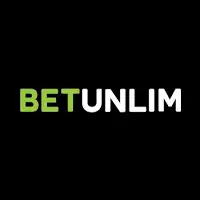 Bet with USDT on BNB and big bonuses on Betunlim Casino!
Bet with USDT on BNB and big bonuses on Betunlim Casino!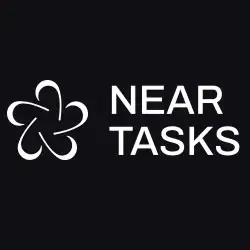 How can Near Protocol possibly transform AI?
How can Near Protocol possibly transform AI?


























